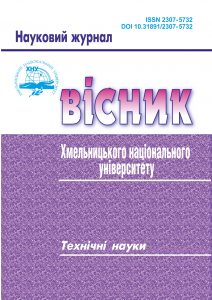STUDY OF THE INFLUENCE OF TOOL GEOMETRY AND CUTTING MODES ON THE ACCURACY OF PROCESSING PARTS OBTAINED BY FDM PRINTING
DOI:
https://doi.org/10.31891/2307-5732-2023-329-6-217-222Keywords:
3D printing, cutting tool geometry, milling, CNC machines, CoPET plastic processingAbstract
FDM printing (rapid prototyping) is a production process during which you can quickly obtain parts with high geometric complexity, given dimensions and with low energy consumption. From the early stages, 3D printing was identified as a method of rapid prototyping of parts that have a high level of complexity and their manufacture by traditional methods (for example, mechanical processing on CNC machines) is impossible.
Despite the advantages that additive manufacturing offers, it has not yet been incorporated into industrial mass production lines as an alternative to traditional technologies, due to the long manufacturing time of parts and the lack of repeatability. In some cases this may not be a serious problem, but in some industrial applications where high precision parts are required, there are limitations due to the surface roughness of the outer layer and the accuracy requirements. To eliminate these shortcomings, an additional processing process is required.
The purpose of this study is to determine the most optimal parameters of the cutting tool and cutting modes (spindle rotation frequency, feed rate, depth of cut, diameter of the end mill, geometric parameters of the cutting edge) for mechanical processing of parts obtained by FDM printing from CoPET (PETg) plastic in order to obtain the specified parameters accuracy and surface roughness.
The article describes the study of the work of four types of end mills, which differ in the material of the cutting part, geometry, number of cutting teeth, coating. A rectangular prism printed from CoPET plastic, without internal voids, 100% filling, was selected as a blank. Processing was carried out on a MIKRON WF-2 vertical milling machine. For end mills, the cutting process was investigated with two different strategies: milling of a closed groove over the entire working width of the mill; milling of an open groove with the side surface of the cutter. The suitability for effective processing of each type of tool is evaluated.
Results were recorded and evaluated using an optical electron microscope.

